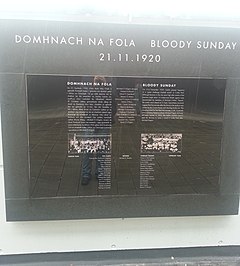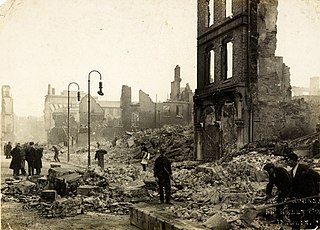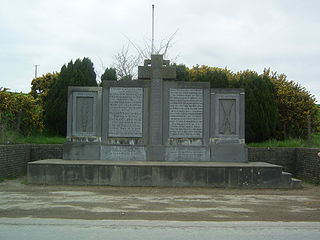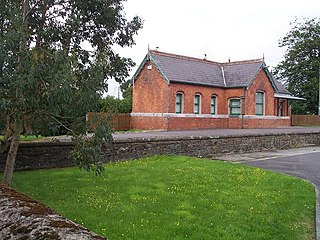 W
WThe Selton Hill Ambush took place on 11 March 1921, during the Irish War of Independence. An Irish Republican Army (IRA) flying column was ambushed by members of the RIC Auxiliary Division at Selton Hill, County Leitrim. Six IRA officers of the Leitrim Brigade were killed.
 W
WBloody Sunday was a day of violence in Dublin on 21 November 1920, during the Irish War of Independence. More than 30 people were killed or fatally wounded.
 W
WThe Carrowkennedy ambush was an ambush carried out by the Irish Republican Army (IRA) on 2 June 1921, during the Irish War of Independence. An IRA flying column, commanded by Michael Kilroy, ambushed a mobile patrol of the Royal Irish Constabulary Special Reserves at Carrowkennedy, near Westport, County Mayo. It resulted in the deaths of eight of the RIC, including some who were killed by their own rifle grenade. After two hours the RIC surrendered and their weaponry and ammunition were seized by the IRA.
 W
WThe Clonbanin ambush was an ambush carried out by the Irish Republican Army (IRA) on 5 March 1921, during the Irish War of Independence. It took place in the townland of Clonbanin, County Cork.
 W
WThe Clonfin Ambush was an ambush carried out by the Irish Republican Army (IRA) on 2 February 1921, during the Irish War of Independence. It took place in the townland of Clonfin between Ballinalee and Granard in County Longford. The IRA ambushed two lorries carrying members of the British Auxiliary Division, sparking a lengthy gun battle in which four Auxiliaries were killed and eight wounded. The Auxiliaries eventually surrendered and their weapons were seized. The IRA commander, Seán Mac Eoin, won some praise for helping the wounded Auxiliaries. Following the ambush, British forces burned a number of houses and farms in the area, and shot dead an elderly farmer.
 W
WThe Clonmult ambush took place on 20 February 1921, during the Irish War of Independence.
 W
WThe Coolavokig ambush was carried out by the Irish Republican Army (IRA) on 25 February 1921, during the Irish War of Independence. It took place at Coolavokig, on the road between Macroom and Ballyvourney, County Cork. A 60-man flying column of the IRA's 1st Cork Brigade under Seán O'Hegarty, ambushed a 70-man convoy of the Auxiliary Division under Major Seafield Grant, sparking a four-hour battle. Three Auxiliaries were killed, including Major Grant, and others wounded. The IRA column left the area when British reinforcements arrived. After the ambush, British forces stopped carrying out raids and patrols in the area.
 W
WThe Burning of Cork by British forces took place on the night of 11–12 December 1920, during the Irish War of Independence. It followed an Irish Republican Army (IRA) ambush of a British Auxiliary patrol in the city, which wounded twelve Auxiliaries, one fatally. In retaliation, the Auxiliaries, Black and Tans and British soldiers looted and burnt numerous buildings in Cork city centre. Many civilians reported being beaten, shot at, and robbed by British forces. Firefighters testified that British forces hindered their attempts to tackle the blazes through intimidation, cutting their hoses and shooting at them.
 W
WThe Crossbarry Ambush or Battle of Crossbarry occurred on 19 March 1921 and was one of the largest engagements of the Irish War of Independence. It took place near the small village of Crossbarry in County Cork, about 20 km south-west of Cork city. About a hundred Irish Republican Army (IRA) volunteers, commanded by Tom Barry, escaped an attempt by about 1,200 British troops to encircle them. During the hour-long battle, ten British troops and three IRA volunteers were killed.
 W
WOn 25 May 1921, during the Irish War of Independence, the Custom House in Dublin was occupied and then burnt in an operation by the Irish Republican Army (IRA). The Custom House was the headquarters of the Local Government Board for Ireland, an agency of the British administration in Ireland, against which the IRA was fighting in the name of the self-proclaimed Irish Republic. The operation, involving over 100 IRA volunteers, was a propaganda coup for the republicans but a military disaster for the IRA in the Irish capital. A force of British Auxiliaries quickly arrived and a gun battle erupted. Five IRA volunteers were killed, along with three civilians, and about 80 volunteers were captured.
 W
WThe Dromkeen ambush took place on 3 February 1921, during the Irish War of Independence, at Dromkeen in County Limerick. The Irish Republican Army (IRA) ambushed a Royal Irish Constabulary (RIC) patrol, killing 11 policemen.
 W
WThe Headford Ambush was carried out by the Irish Republican Army (IRA) on 21 March 1921, during the Irish War of Independence. The IRA's 2nd Kerry Brigade ambushed a train carrying British troops of the Royal Fusiliers at Headford Junction railway station near Killarney, County Kerry. This sparked a battle lasting almost an hour, in which at least 14 people were killed – nine British soldiers, two IRA volunteers and three civilians. The IRA withdrew after another train carrying British troops arrived.
 W
WThe Kilmeena ambush was an action during the Irish War of Independence that took place at Kilmeena, County Mayo on 19 May 1921. The ambush ended in defeat for the local West Mayo Irish Republican Army (IRA), with six IRA volunteers killed and seven wounded. Two members of the Royal Irish Constabulary (RIC) and one Black and Tan were also killed in the action.
 W
WThe Kilmichael Ambush was an ambush near the village of Kilmichael in County Cork on 28 November 1920 carried out by the Irish Republican Army (IRA) during the Irish War of Independence. Thirty-six local IRA volunteers commanded by Tom Barry killed seventeen members of the Royal Irish Constabulary's Auxiliary Division. The Kilmichael ambush was politically as well as militarily significant. It occurred one week after Bloody Sunday, marking an escalation in the IRA's campaign.
 W
WThe Rineen ambush was an ambush carried out by the Irish Republican Army (IRA) on 22 September 1920, during the Irish War of Independence. It took place at Drummin Hill in the townland of Drummin, near the hamlet of Rineen, County Clare.
 W
WThe Scramoge ambush was an ambush carried out by the Irish Republican Army (IRA) on 23 March 1921, during the Irish War of Independence. The IRA ambushed a lorry carrying British troops and Royal Irish Constabulary (RIC) officers at Scramoge, near Strokestown in County Roscommon. Three British soldiers and an RIC officer were killed, while two RIC 'Black and Tans' were captured and shot dead shortly after.
 W
WThe Sheemore ambush was an ambush carried out by the Irish Republican Army (IRA) on 4 March 1921, during the Irish War of Independence. It took place at Sheemore near Carrick-on-Shannon, County Leitrim.
 W
WThe Soloheadbeg ambush took place on 21 January 1919, when members of the Irish Volunteers ambushed Royal Irish Constabulary (RIC) officers who were escorting a consignment of gelignite explosives at Soloheadbeg, County Tipperary. Two RIC officers were killed and their weapons and the explosives were seized. The Volunteers acted on their own initiative and had not sought authorisation for their action. As it happened on the same day that the revolutionary Irish parliament first met and declared Ireland's independence, it is often seen as the first engagement of the Irish War of Independence.
 W
WThe Upton train ambush took place on 15 February 1921, during the Irish War of Independence. The Irish Republican Army (IRA) mounted an attack on a train carrying British soldiers at Upton, County Cork. The action was a disaster for the IRA; three of its volunteers were killed and two wounded. Six British soldiers were wounded, three seriously. Six civilian passengers were killed and ten wounded in the crossfire.